-
Welcome to this forum . We are a worldwide group with a common interest in Birmingham and its history. While here, please follow a few simple rules. We ask that you respect other members, thank those who have helped you and please keep your contributions on-topic with the thread.
We do hope you enjoy your visit. BHF Admin Team
You are using an out of date browser. It may not display this or other websites correctly.
You should upgrade or use an alternative browser.
You should upgrade or use an alternative browser.
Birmingham 1969-73
- Thread starter mikejee
- Start date
Radiorails
master brummie
The stone jars and other supporting information can be read on this thread:
https://birminghamhistory.co.uk/forum/index.php?threads/botanical-brew-stone-jars.48001/#post-601904
I like the play on the 'rely on' wording on the sign.
https://birminghamhistory.co.uk/forum/index.php?threads/botanical-brew-stone-jars.48001/#post-601904
I like the play on the 'rely on' wording on the sign.
re post 267....and what is on that corner now mike...think ive got the right corner...what a shame those houses were lovely and not much wrong with them by the looks of it...
https://www.google.co.uk/maps/@52.4...4!1s_7Zt4l4ifrHMW52qWicjHg!2e0!7i13312!8i6656
https://www.google.co.uk/maps/@52.4...4!1s_7Zt4l4ifrHMW52qWicjHg!2e0!7i13312!8i6656
Phil
Gone, but not forgotten.
Mike,
It's as I have said so many times most of the houses in Balsall Heath especially around the Princess Road, Alexander Road and Varna Road were not demolished because they were slums but solely to rid the area of it's red light population. In reality all they did was the move the problem to the other side of Calthorpe Park in Cheddar Road where the problem got worse. To add insult to injury they replaced all those wonderful Victorian Houses with little boxes.
It's as I have said so many times most of the houses in Balsall Heath especially around the Princess Road, Alexander Road and Varna Road were not demolished because they were slums but solely to rid the area of it's red light population. In reality all they did was the move the problem to the other side of Calthorpe Park in Cheddar Road where the problem got worse. To add insult to injury they replaced all those wonderful Victorian Houses with little boxes.
Again on the west of the Rea, a little less grand, but still would have been good houses when built. These are in Varna Road. Cannot definitely identify the number but, although here the next houses along have been demolished, believe them to be the same houses as those in this earlier (early 1960s) black and white photo from the internet.


The next shot is taken to the left of the above , which can partly be seen in it

And a believe this next shot was also taken in Varna road close to the previous photos


The next shot is taken to the left of the above , which can partly be seen in it

And a believe this next shot was also taken in Varna road close to the previous photos

Last edited:
Taken later than the earlier shots, I believe (from conformation of houses with houses to right at right at right angles with the large tree behind, which is probably Calthorpe Park ) that this shows 91-93 Varna road at the far end next to the park.
Judging from the census, occupants in the late 19th and early 20th centuries were respectable (what we would call) middle class families- stockbroker's clerks, commission agents, wholesale clothiers and the those living on their own means.

Judging from the census, occupants in the late 19th and early 20th centuries were respectable (what we would call) middle class families- stockbroker's clerks, commission agents, wholesale clothiers and the those living on their own means.

Below is 5 and 6 Speedwell Road ( in red on the map. ). The sharp arched roof and tall chimney of the house on the Pershore road in the distance is still visible on Streetview.
In 1881 no 6 was occupied by Mary Winspear. She was a widow who took in lodgers, but who had been involved in a case which shows that insurance companies have always been the same. Her husband, who happened to be an insurance agent and, wishing to provide for his wife, insured himself against accidental death. He died after suffering an epileptic fit while crossing the River Rea (possibly at the end of Speedwell Road), which caused him to fall into the river and drown. the insurance company, however, tried , as usual, to get out of their responsibilities by saying his death was due to natural causes. Fortunately for her the court, and the appeal court, saw sense and awarded her the £1000.
For some reason I also photographed brewhouse behind (if it is the right description for such a place in a large house)


In 1881 no 6 was occupied by Mary Winspear. She was a widow who took in lodgers, but who had been involved in a case which shows that insurance companies have always been the same. Her husband, who happened to be an insurance agent and, wishing to provide for his wife, insured himself against accidental death. He died after suffering an epileptic fit while crossing the River Rea (possibly at the end of Speedwell Road), which caused him to fall into the river and drown. the insurance company, however, tried , as usual, to get out of their responsibilities by saying his death was due to natural causes. Fortunately for her the court, and the appeal court, saw sense and awarded her the £1000.
For some reason I also photographed brewhouse behind (if it is the right description for such a place in a large house)


bootneck42
proper brummie kid
I've just found post no.104 (above) of this thread which brings back some memories. I lived at No.69 Cox Street West, with my Mum and two sisters, in the mid to late 1960's. No.69, the left one of the two with bay windows in picture 2, was almost opposite Lincoln St Motors, where I worked until 1965.The next four shots show in, succession, the houses nos 68-74, 66-69, 61-66 and finally the whole row, though in the last shot the larger numbered houses are not very clearly shown.
No 74 is actually being demolished. In the last 80 years of its life it seems to have been just a domestic house, though it is recorded as a general shop in the 1880s.
No 73 was a pawnbrokers from the early 1870s till around WW1, but then also was just domestic housing.
No 72 was a ladies hairdressers in the 1960s, but from the mid 1930s till the late 1950s was occupied by a saddler, Robert Shelton, and previously from about 1890 by another saddler, Joseph Lomas. Previous to that it had been a butchers. a hardware dealers and a greengrocers.
No 71 had a wide range of occupants, watch & clock dealer, cabinet maker , Mac Motors (whatever they may be), but mostly general shopkeeper. For a few years at the end of WW1 no 70 was the home of James Davies , bird dealer, and before that was a general shop, haberdasher, and for over 12 years from 1880, a staymaker (John Cartledge). For the benefit of Eastenders fans, in 1879 it was the home of greengrocer Arthur Woodyatt. (for non-fans Adam Woodyatt plays Ian Beale fruit & veg stallholder).
No 69 seems to have been largely non-commercial, though has been occupied by a wood-turner and a sign writer.
No 68 again was largely just residential.
No 67 was lastly a secondhand clothes shop and previously for 10 years a tailoress, with previous occupants being a general shopkeeper, hardware, dealer, newsagent, and painter & decorator.
No 66 was initially a haberdashers, then a general shop for some years, but around 1910 the site was taken over by the Gunn family, initially by Thomas Gunn as a tripe shop, which was carried on by Sarah Gunn. However in the late 1920s, perhaps because of a lack of demand for tripe, she changed to a drapers, which did not last long and from the early 1930s until WW2 it was a printers, latterly The Calthorpe Press.
No 66 was a general shop for much of its life, though a newsagent for a while in the 1880s and a drapers at the end of WW1, but after the early 1930s seems to be residential.
64 was residential for most of its life except for a period in the 1880s as a general shop and in the 1920s when it was occupied by a laundress.
No 63 was a tobacconist and then a boot repairers in the 1870s, and then a general shop till around 1910, when it was briefly a fried fish shop, then a secondhand cloths shop for a year or so.
No 62 George Pettitt was a shoe & boot repairer here from 1881 till about 1932, when Miss Kate Pettitt took over the shop , who was at first just described as a shopkeeper, but then from about 1942 till about 1956 as a grindery dealer, which I gather means she sold the tools and equipment of shoemakers and leatherworkers.
Finally no 61 was the off license. The first licensee was probably Henry James Gardner Riome, ale and porter dealer from around 1876 . He was only there for a few years, and was followed by a succession of other licensees .
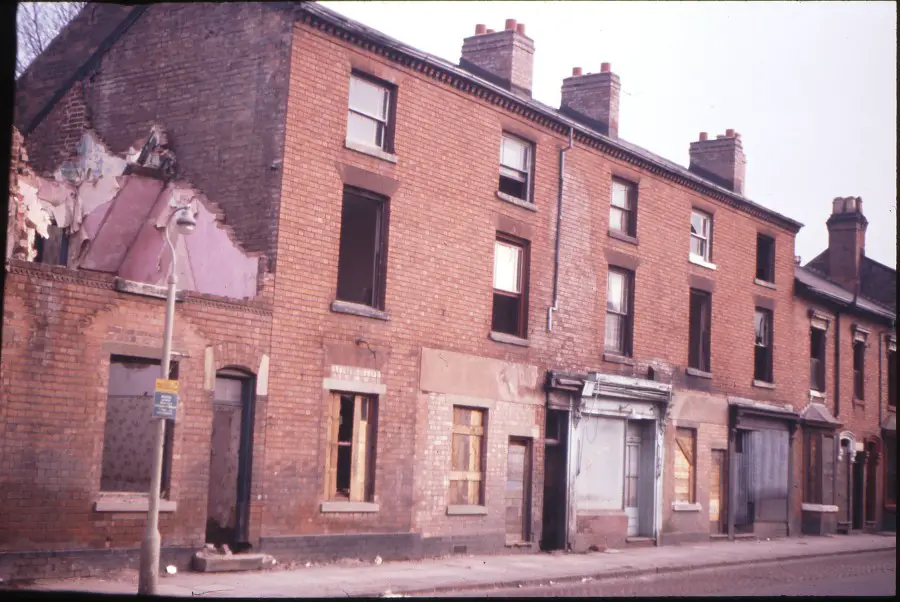
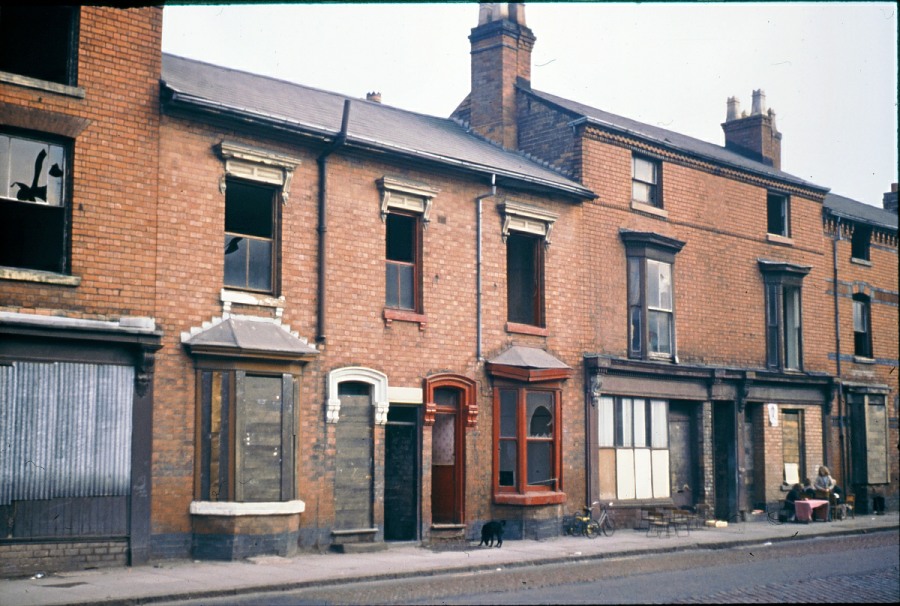
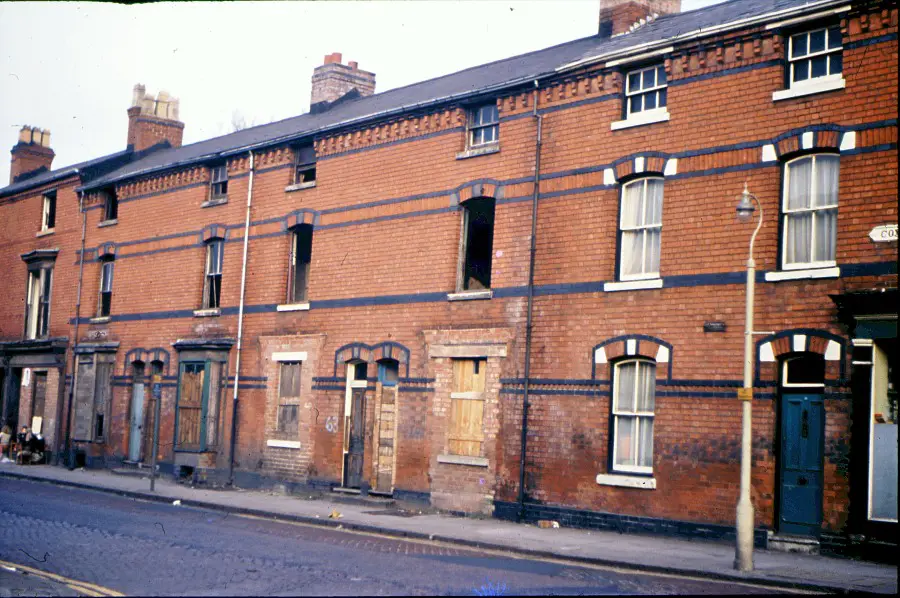
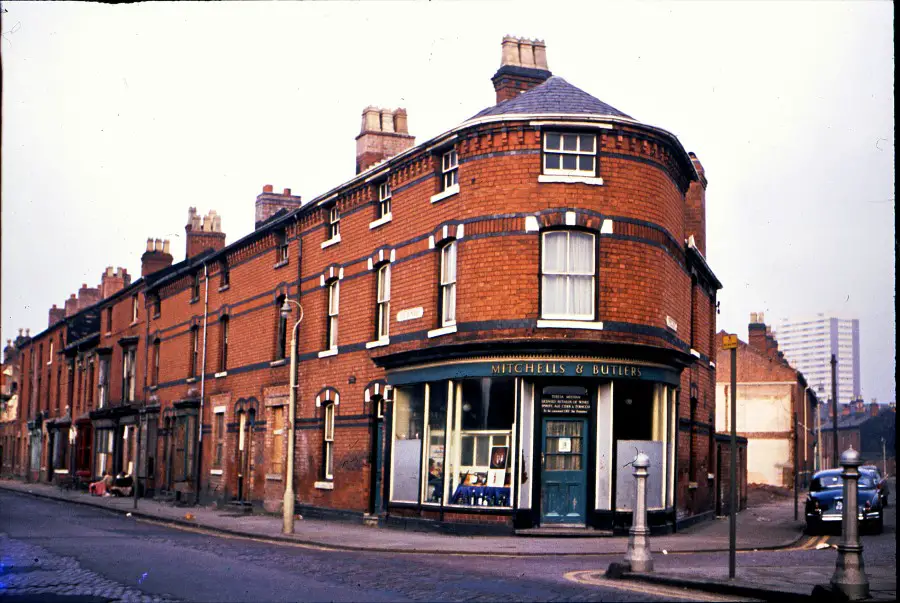
These are great photo's and I'd really like to see more if there are any.
Thanks
Mike
Last edited:
Richard Dye
master brummie
My Grandmother lived at 16 Alfred st, and uncle lived on Church Rd and another had a greengrocer 7 fishmonger on Litchfield Rd. Thanks for the memories!The last of this film. I am sure they are all in the same area,
9. Have decided with Phil’s advice that this is somewhere along Beales St. Beales St.
10. Another that will probably never be identified.
11. Possibly Vicarage road, but not really sure.
12.A pub where we can just perceive Mitchells & Butler on the fascia. It was unidentified, but now has been identified as The Crown at the junction of Church Road and Alfred St
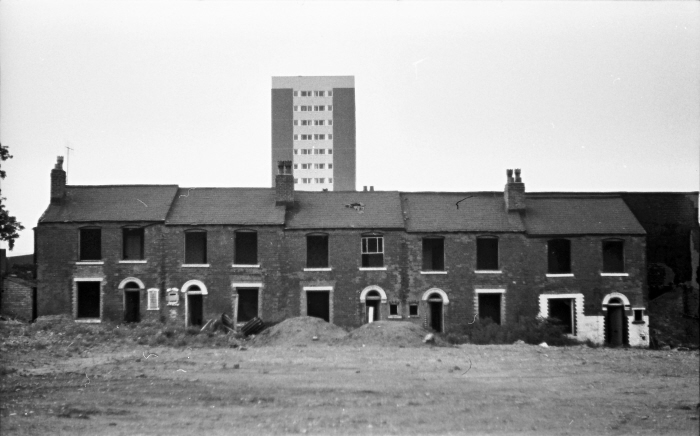
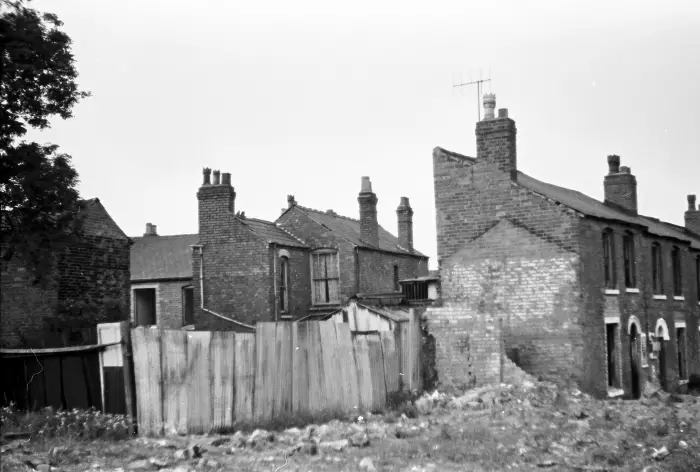
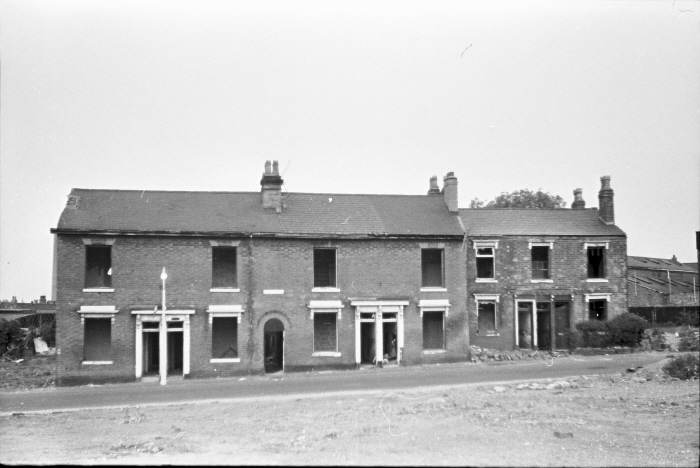
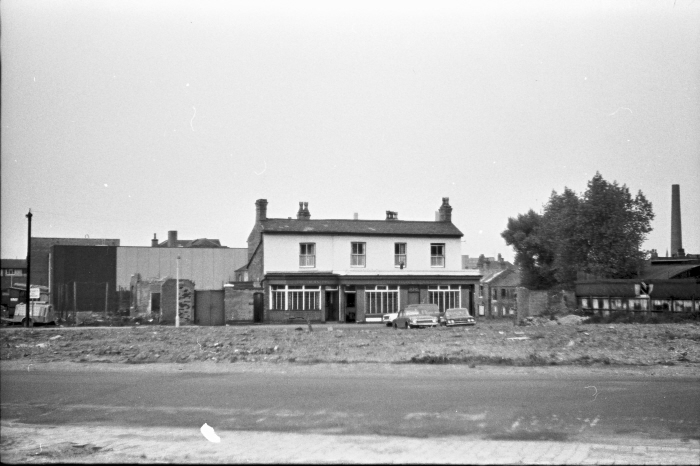
With the help of Brummylad I can now identify the five photos below as being in Upper Cox St. The first three run together and comprise nos 31 -19 on the west side of the road, while the fourth is nos 11 & 12 further up, and the fifth the back entrance of Mary St School , together with the houses to the right of it running from no 57 down to about no.49.
A few houses had been built in the street, mainly on the eastern side, by the time of the 1881 census, with a much larger number by 1891. The houses in the street did originally contain a variety of occupants. There were a number "living on their own means" including in 1891 Rose Wright ( aged 34) at no 26, who had her sister with her, listed as a domestic servant. At the same time no 30 was Herbert Matthews, a grocers manager, at 28 Frederick Smith, a carpenter, at 25 Trevor Brandon, a fish salesman, and at 20 Henry Sims , a gold beater. No-one in the street appears to have gained notoriety, or , at least, if they did it does not seem to have appeared in the papers with their address.






A few houses had been built in the street, mainly on the eastern side, by the time of the 1881 census, with a much larger number by 1891. The houses in the street did originally contain a variety of occupants. There were a number "living on their own means" including in 1891 Rose Wright ( aged 34) at no 26, who had her sister with her, listed as a domestic servant. At the same time no 30 was Herbert Matthews, a grocers manager, at 28 Frederick Smith, a carpenter, at 25 Trevor Brandon, a fish salesman, and at 20 Henry Sims , a gold beater. No-one in the street appears to have gained notoriety, or , at least, if they did it does not seem to have appeared in the papers with their address.






On the corner of Upper Cox St with Balsall Heath Road (180 Balsall Heath Road) was the Wearwell Overalls Co. This can be seen on the map in the previous post. The company was formed in 1939 at 20 Longbridge Road to manufacture, though they did also make army uniforms at one time. They added this site, which seems to have been more a shop and offices, in the early 1950s and remained until the late 1960s, when they moved the business to Tamworth. Immediately before WW2 the site had been occupied for a short time by a furniture dealer, Emanuel Miller. However originally , in around 1870 till about 1937 it was a bakers, originally run by Thomas Marshall, and for the last 20 years by the Proffitt & Westwood chain.
To the left of Wearwells , no.182 seems always o have been an off-licence, the last tenant being J.J. Clooney.
Next door, G.H.Monk & Co had a number of retail shops in Birmingham, but only had this wholesale site at nos.184, 186 since the early 1950s. Previously no 186, presumably including the factory behind shown on the map, had always been a butchers. Before WW2 no 184, other than a short period as a tailors, had always been a grocers with different occupants..
No 188 always to have been a grocers of some sort, while no 190, on the far left of the second photo had been a toy retailer, a childrens clothes shop amongst other things.


To the left of Wearwells , no.182 seems always o have been an off-licence, the last tenant being J.J. Clooney.
Next door, G.H.Monk & Co had a number of retail shops in Birmingham, but only had this wholesale site at nos.184, 186 since the early 1950s. Previously no 186, presumably including the factory behind shown on the map, had always been a butchers. Before WW2 no 184, other than a short period as a tailors, had always been a grocers with different occupants..
No 188 always to have been a grocers of some sort, while no 190, on the far left of the second photo had been a toy retailer, a childrens clothes shop amongst other things.


sue griffiths
proper brummie kid
My Grandfather Richard Waite lived at 5 and 6 Westerley Terrace, Speedwell Road, would the houses there look the same as these.
Am not sure which houses you asking if they were the same as. I do not know where on Speedwell road Westerley terrace was . It was not a terrace of small houses set back from the road , as there do not seem to be any like that in that road. All the houses in that road were similar to those in post 277
sue griffiths
proper brummie kid
Thank you fo this. I will take the photo of 5 and 6 Speedwell Road as a similar looking house.
Sue
Sorry to be confusing, but if your ancestor had been living at an address such as this in the mid 1900s , then I could not have been certain that 5.6 Westerley Terrace, Speedwell Road was the same address as 5,6 Speedwell Road, as houses were then often numbered in such a terrace separately to the number in the road. However, as it was your grandfather, and more recent, then It is reasonable toassume that. Having said that, I now realise that I did take a photograph of this property and it is on post 279, and the position is in red on the map below

Sorry to be confusing, but if your ancestor had been living at an address such as this in the mid 1900s , then I could not have been certain that 5.6 Westerley Terrace, Speedwell Road was the same address as 5,6 Speedwell Road, as houses were then often numbered in such a terrace separately to the number in the road. However, as it was your grandfather, and more recent, then It is reasonable toassume that. Having said that, I now realise that I did take a photograph of this property and it is on post 279, and the position is in red on the map below

sue griffiths
proper brummie kid
Thank you so much, I know the Waite family lived at 23 Speedwell Road in 1891. Then moved in 1901 census to 5 and 6 Westerley Terrace so most probably this road. Richards son Enos lived with the Kiteley family at no.7.
alan bartlett
master brummie
The picture of the café on Church Lane looks like the place I used to work in the 60,s. then the tower block was not there, all the old houses were still intact. The company I worked for was Lambert & Flowers, pipe fitters and heating. The building was the office where we received our job instructions. They also had a yard at the top of Church Lane near the junction with Lichfield Road where the vans etc were kept. Amazing picture, I didn,t expect to see that place again, happy days though.The Osborne tower is in the background of The Golden Arrow, at the junction of Gladstone st. and Church Lane. I should think this café was the last original building in the area. It had been a grocers from its erection around 1883 till the late 1950s, only changing use to a café for about ten years.
The next looks like it is showing the school in vicarage road again, but there seem to be extra buildings to the right part of the school compared to the first picture in #7.
No idea where the next photo is, though almost certainly in the same area, but perhaps someone recognises it
The next is 90 Church Lane, Aston. This site seems to have largely worked in metal trades. In 1900 Benjamin Bloomer, nail & boot protector maker worked there, in 1921 it was a shoeing smith, George Murrell, while in 1936 Sydney Barnett made chair frames chair frame, but by 1946 it had become Regent cleaners.
Last is one that almost certainly will never be identified, though again in the same area
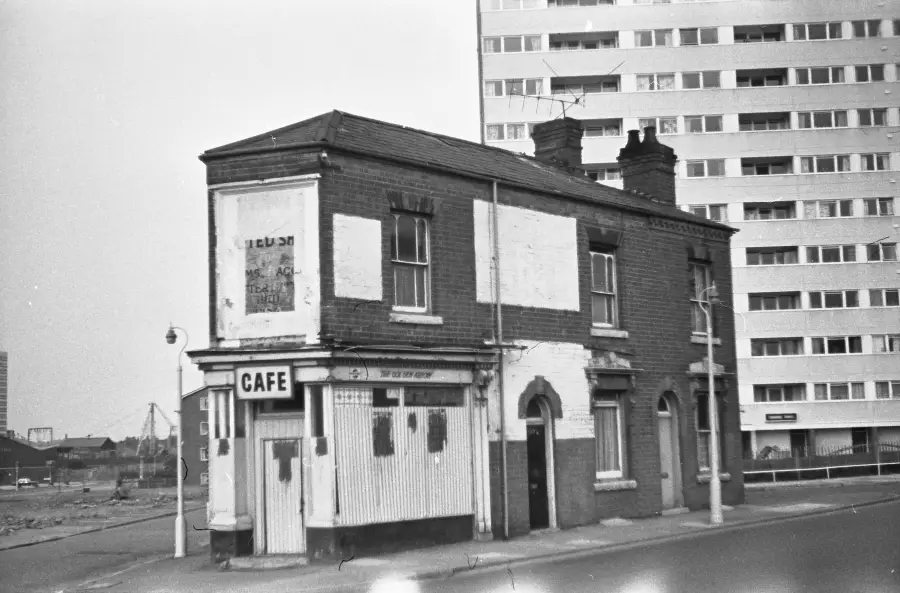
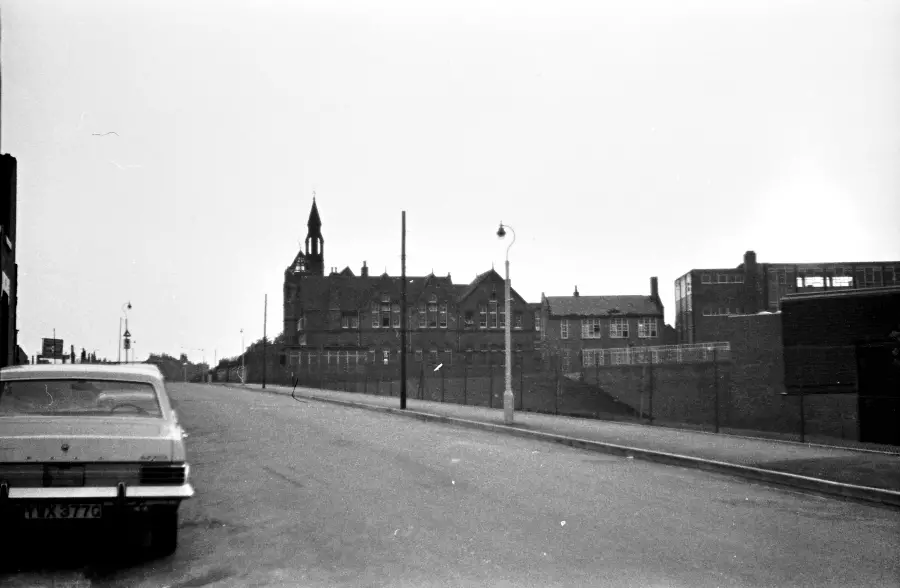

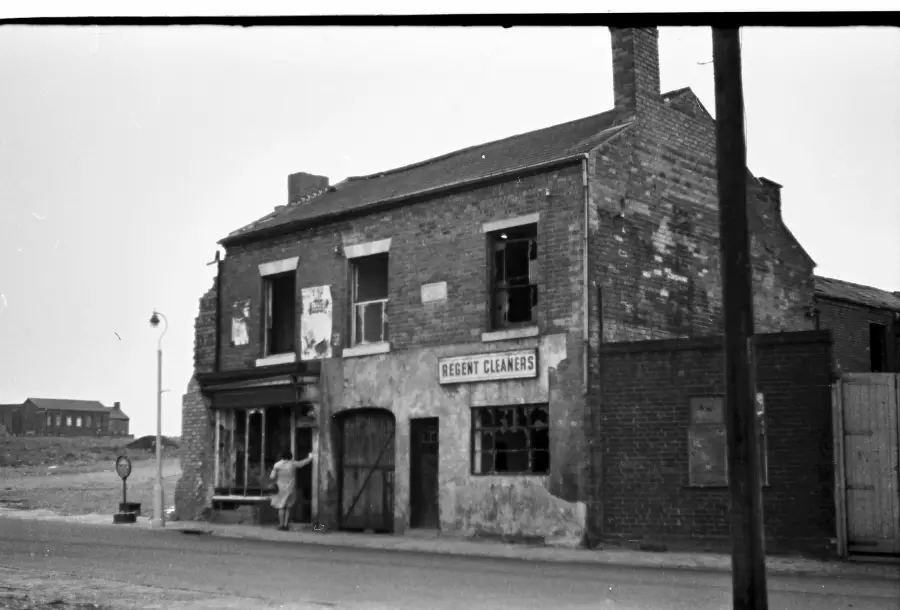
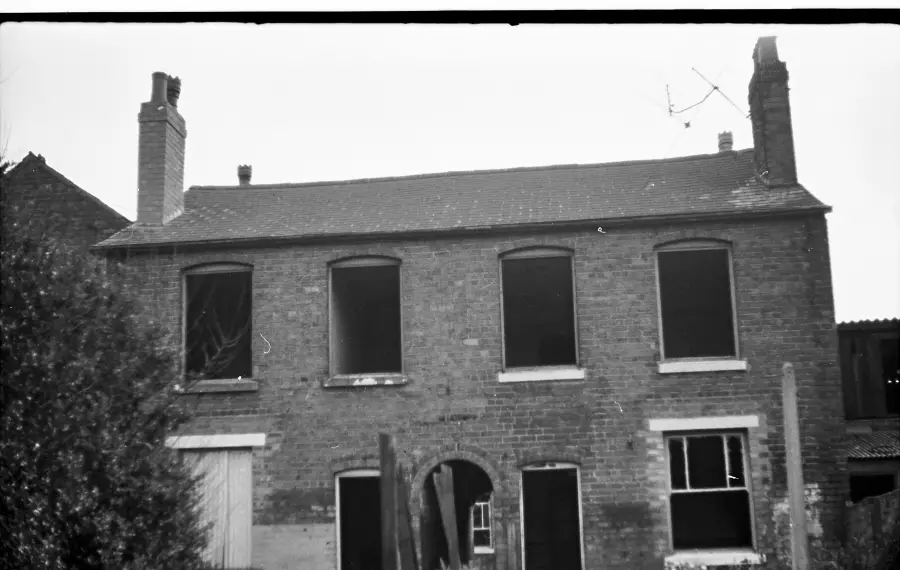
Following from post 283 , at 196 Balsall Heath Road, on the corner of Mary St was apparently H.L. Humpage, corn factors. Although this photo was taken in the early 1970s, only the small Typhoo Tea advert above the door indicates that for most of the 1960s it was in fact F & G Gould, grocers. Harry Humpage started the corn factors around 1906 in Ladypool Road and 15 Mary St, but moved to this corner site in the early 1960s, the firm disappearing in the early 1960s as the occupation of corn factor diminished in importance


A few yards down Mary St, on the same side as Humpage's are nos 7-15 Mary St. The last occupant at no 7 was Mrs F.Wilson. At nos 13,15 are Shirley Jig & tool Ltd, press tool makers, though for a short time after their occupancy it was J & L Productions, general engineers, and it is probable that the new occupants had not bothered to change the fascia. Up till about 1965 it was occupied by Monk's butchers (post 283) in Balsall Heath Road, and would have had a connection to the other building via a yard behind. .On the map it appears that 13,15 were also connected physically with nos 3,5, part of which can be seen (white buildings) on the far right of the photo. The doors on 3,5 have wording " .. Productions" on them, so it appears that J.L.Productions repainted those doors, but not the fascia at 13,15.


Almost opposite the school was Camden square. Three houses at the back of the square are shown on the first photo below.

The next photo is Mary St, and i believe it is probably no 18a , opposite the school

Some children opposite Camden Square , looking down towards Edward Road. On the left Whitmarley hoiuse is on the corner of Knutsford St

Looking from the other direction, nos 36-42 are on the opposite corner of Knutsford St.. The far-left building(no 36) in the 1920s was a jobbing builders, and before that a plasters, hence the wide arched entrance.


The next photo is Mary St, and i believe it is probably no 18a , opposite the school

Some children opposite Camden Square , looking down towards Edward Road. On the left Whitmarley hoiuse is on the corner of Knutsford St

Looking from the other direction, nos 36-42 are on the opposite corner of Knutsford St.. The far-left building(no 36) in the 1920s was a jobbing builders, and before that a plasters, hence the wide arched entrance.

Carrying on down Mary st . Nos 52-56 look as if they were originally two large houses, but 52 and 54 , onn the left are now two separate abodes.. On the right, what was once quite an impressive house was in the 1930s the home and place of business of a pawnbroker, Mrs Elsie Machin, and (presumably) her daughter, Miss Zitag Machin, a music teacher. The building was occupied by various pawnbrokers back to the mid 1890s

A further down the street was what I believe was nos 58-60, the building in the far right being at one time a wire works

In the same area on Mary St were these two houses, which I have not identified


A further down the street was what I believe was nos 58-60, the building in the far right being at one time a wire works

In the same area on Mary St were these two houses, which I have not identified

A little further down, opposite the junction with Balfour st are nos 84-92. The last newsagent at no 88 seems to have been H. Childs., who had been there since the early 1950s, though it had been a newsagent Next door, the last name on the hairdressers at no 90 seems somewhat out of place - Patt's of Mayfair. They were possibly originally a father/daughter or husband /wife team, as the original name, when they supposedly moved from London around 1960 to take over the business of the more down to earth sounding Horace Watkins ,was Paul's of Mayfair. both these properties had served the same purpose since the very early 1900s, though before then no 90 was a fried fish shop.


Last edited:











